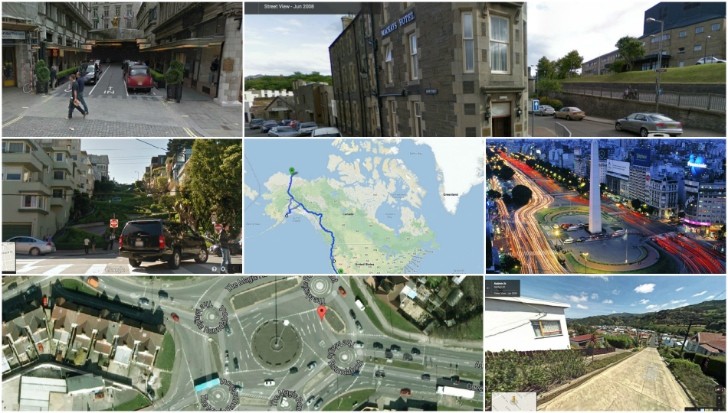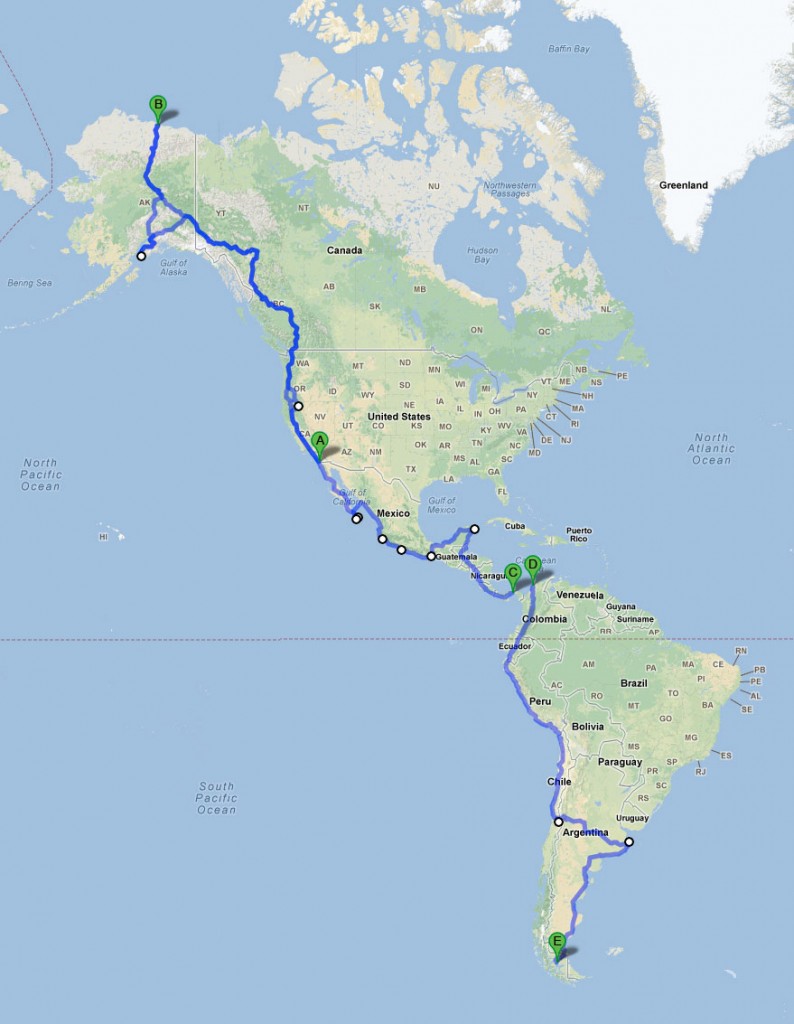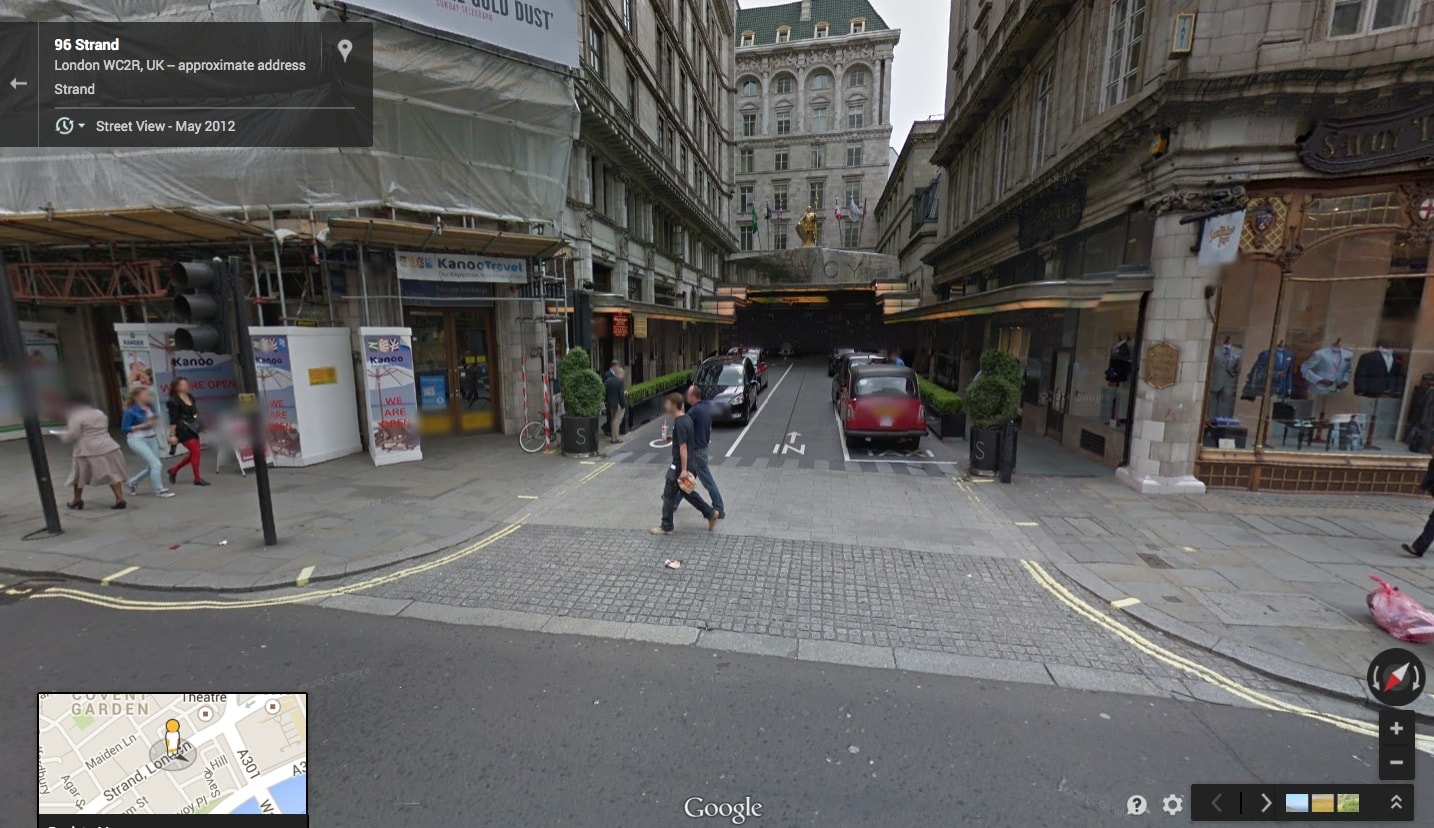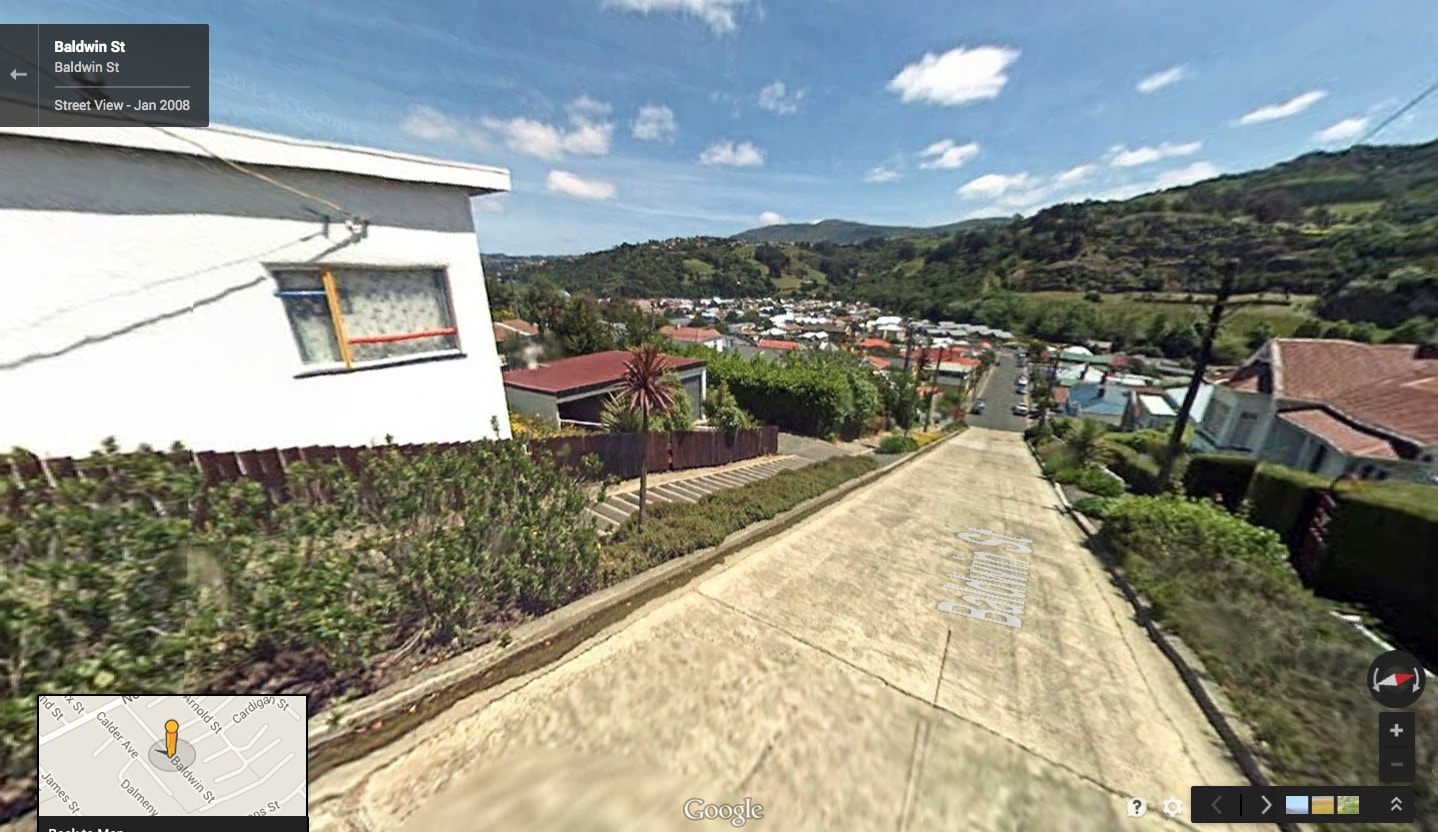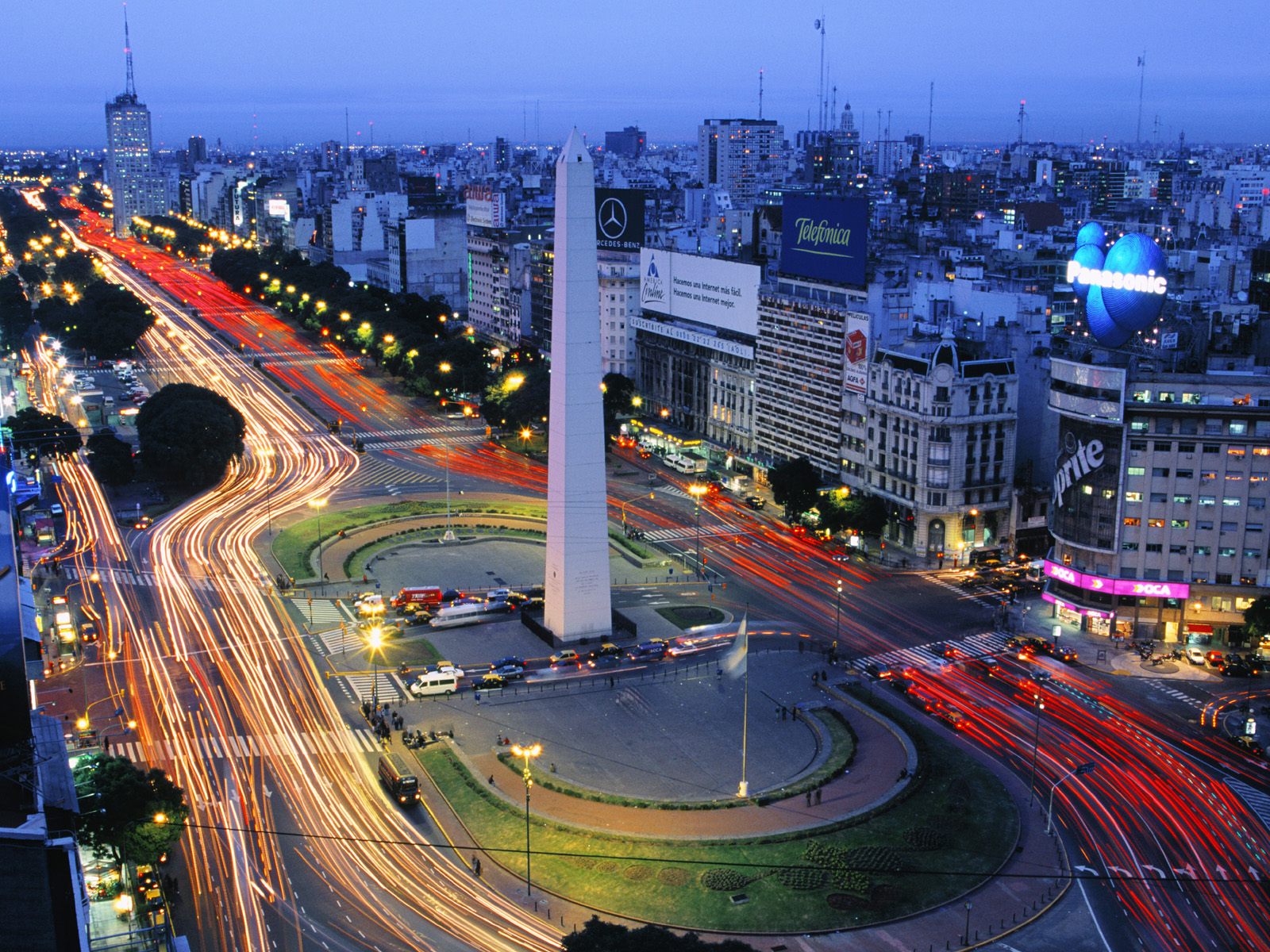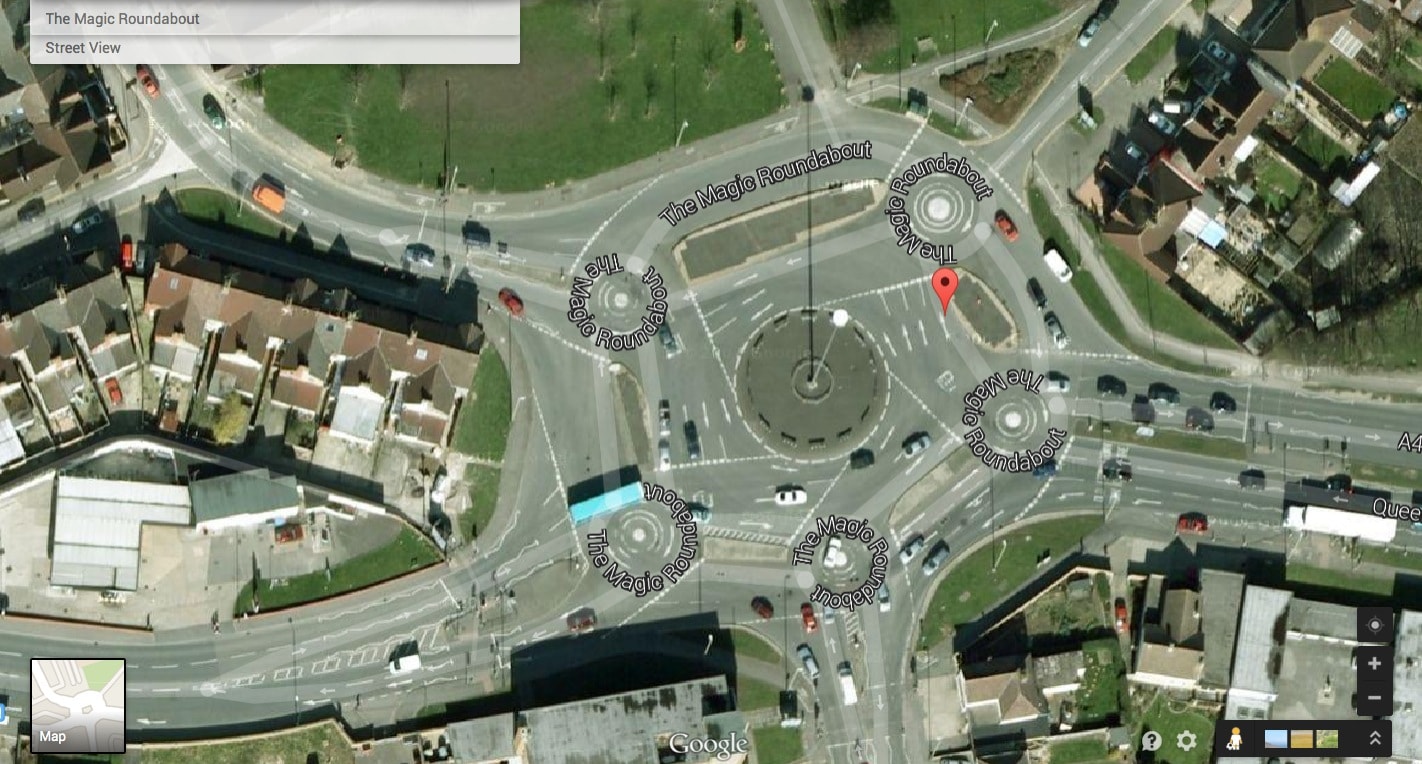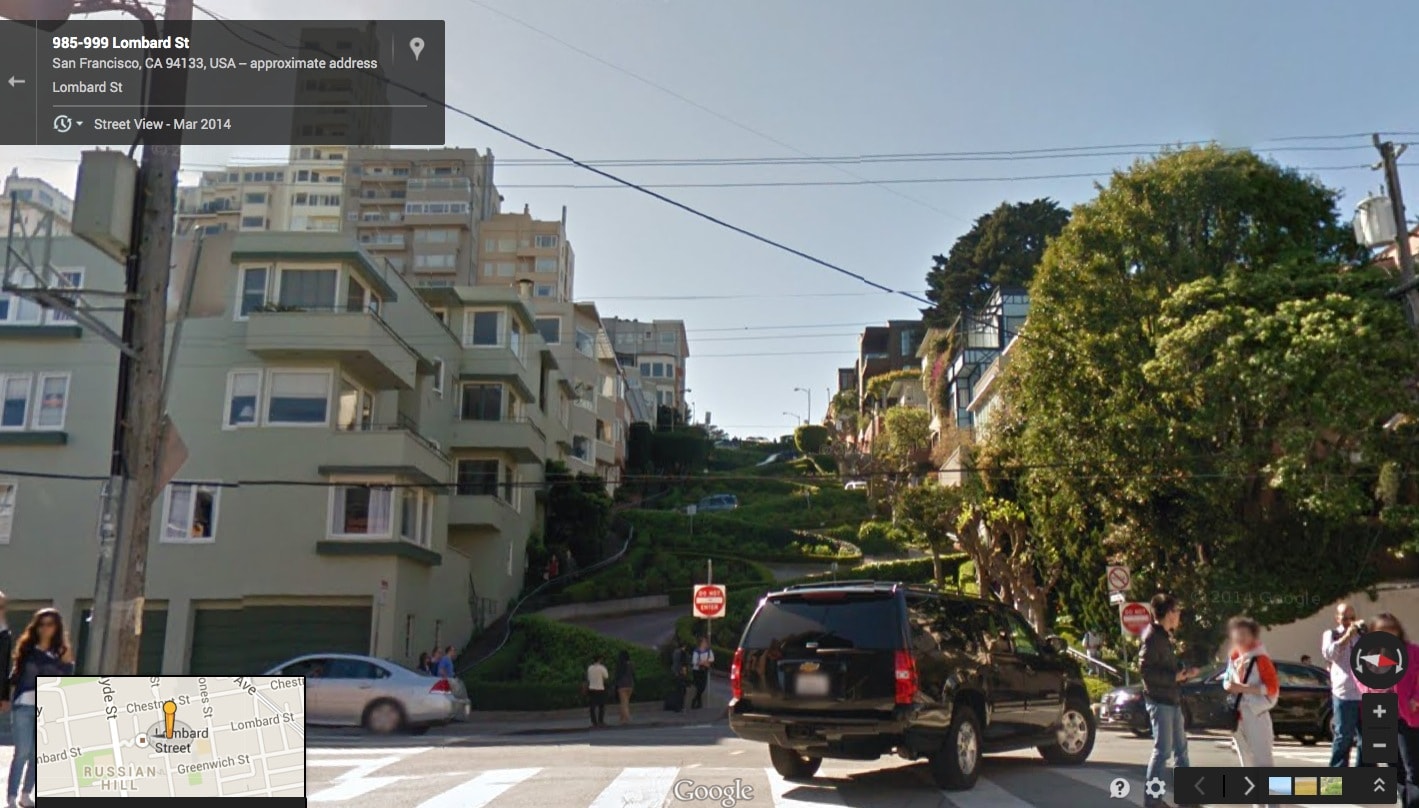Road engineers around the world are doing their best to ensure traffic flows and people stay safe. As the number of vehicles and motorists is rising year after year, it often seems we're doomed to drive straight lines in constant traffic jams spreading across many boringly miles of highway. But there are places in the world where the exact opposite is true, weird places that boggle the mind. And best of all, you can check them out from the comfort of your home using the "magic" of Google Maps.
Ever feel like you've been driving down the same street for hours? Maybe it's a crowded New York avenue or maybe you're just driving in circles. However, there is one road out there where the starting point and the end are pretty much the same thing.
In 2006, a town in Caithness, Scotland, entered the Guinness World Records for having the shortest street in the world. Ebenezer Place in Wick measures 6 feet and 9 inches (2.06 meters) and has one address, which leads to the front door of No 1 Bistro – part of Mackays Hotel.
At the time, Murray Lamont, the Hotel owner, made the following statement for Guinness: "The street was built in 1883 and people here know about it but I decided to put it firmly on the map. It has certainly become a great point of interest." When asked about the street's name, he answered that he doesn't really know, but it could have "religious or Masonic roots".
Ebenezer Place was officially declared as a street by Scottish officials in 1887. Nobody really knows how it got so short though.
It the exact opposite end of the scale, we have the Pan-American Highway, recognized as the longest motoring road across the globe. This amazing stretch of road covers approximately 48,000 kilometers and passes through over 20 countries.
A journey from one end to the other starts from Prudhoe Bay, Alaska, in North America to the lower reaches of South America. There is no official end of the highway, as two different towns in Chile and Argentina dispute this title. Like the Amazon river, The Pan-American stretches out into many branches, so it's not just one highway, but a system of roads. The north part travels through 9 countries and stretches from Alaska into Canada and mainland USA. It's the most well developed part. At the border between Panama and Columbia, the Darian Gap, a dangerous portion of rainforest that's approximately 100 km (60 miles), makes travel by motor vehicle impossible. Since the south portion of the road covers 15 countries, some of which are underdeveloped, it's not uniform. Some sections can only be traveled during the dry season and in many regions you can expect to be robbed at gunpoint. But with a total length 1/8 the distance to the moon, this is an adventure some can say no to.
Savoy Court – with a fancy name like that, this British road just had to be a little different, didn't it? Everybody knows that in the United Kingdom, you drive on the left side of the road. That's the way her majesty wants it and it makes life hell for tourists from right-hand drive countries. However, on Savoy Court, everybody has to drive on the right side. Make up your mind England!
For at lest a hundred years, horse-drawn carts and cars have entered and left ‘Savoy Court’, which is a private thoroughfare that leads up to a hotel’s front doors, on the right-hand side. According to the hotel, England signed an act of Parliament in 1902 specifically allowing this to happen.
Another interesting little fact about Savoy Court is that the hotel entrance's minute roundabout means vehicles need a turning circle of 25 ft (8 m) to navigate it. This is this the mandatory legally required turning circle for all of London's famous black cabs.
San Francisco's 22nd Street is famous for its steepness, but the most extreme slope in the world isn't in America. Baldwin Street in Dunedin is recognized by the guys at Guinness as being the steepest street on earth. There are steeper ones, of course, but they are not for car traffic or are too short. If you've never heard of it, that's because you've never visited New Zealand's little university town of Dunedin, located in the southern part of the country.
It's a residential area with small houses, approximately 3.5 kilometers long (2 miles) in length. Thanks to a gradient of 35%, meaning that for every 2.86 meters you travel forwards, you're having to climb one as well., houses there are built at an angle and people use bricks to hold their cars in place because handbrakes just can't cope. Makes you wonder how they paved it in the first place, since 10-ton steamrollers look like they'd have a hard time with the slope.
Baldwin Street has been famous for quite some years now. Cyclist from across the world come here to try and ride up the hill and soapbox races are sometimes organized. In 2002, chocolate maker Catbury started the annual Jaffa race by sending tens of thousands of sweets down the slope.
The widest street in the world is in Buenos Aires, Argentina. Called 9 de Julio Avenue, it's 12 lanes across (6 for each direction) and from sidewalk to sidewalk, pedestrians have to walk 91 meters. That's probably why the road engineers had to install parks in the middle, where people could stop and rest.
The most complicated roundabout in the world is widely considered to be in Swindon, the home of Honda's European operations. The Magic Roundabout, as it's nicknamed, was built in 1972 with 5 mini roundabouts arranged in a circle. In 2009 it was voted the fourth scariest junction in Britain, in a poll by Britannia Rescue. Makes you wonder what the other three are like. Once understood, it's actually very easy to navigate and it reduces traffic congestion well. However, taking a driver's exam in this area must be an absolute nightmare.
While it hasn't got the "steepest road" title, San Francisco manages to have the most crooked one in the US. A section of Lombard Street between the Hyde and Leavenworth streets is famous for its switchback with eight sharp turns. The 27 degree downhill slope was deemed unsafe and between 1922 and 1923, this arrangement was made. The special stretch is only a quarter of a mile (400 meters) long and has been paved with red brick. If Dorothy ever confuses this for the road to OZ, she'd be accompanied by one-way downhill traffic and lots of rose bushes. The speed limit in this section is just 5 mph (8 km/h).
In 2006, a town in Caithness, Scotland, entered the Guinness World Records for having the shortest street in the world. Ebenezer Place in Wick measures 6 feet and 9 inches (2.06 meters) and has one address, which leads to the front door of No 1 Bistro – part of Mackays Hotel.
At the time, Murray Lamont, the Hotel owner, made the following statement for Guinness: "The street was built in 1883 and people here know about it but I decided to put it firmly on the map. It has certainly become a great point of interest." When asked about the street's name, he answered that he doesn't really know, but it could have "religious or Masonic roots".
Ebenezer Place was officially declared as a street by Scottish officials in 1887. Nobody really knows how it got so short though.
It the exact opposite end of the scale, we have the Pan-American Highway, recognized as the longest motoring road across the globe. This amazing stretch of road covers approximately 48,000 kilometers and passes through over 20 countries.
A journey from one end to the other starts from Prudhoe Bay, Alaska, in North America to the lower reaches of South America. There is no official end of the highway, as two different towns in Chile and Argentina dispute this title. Like the Amazon river, The Pan-American stretches out into many branches, so it's not just one highway, but a system of roads. The north part travels through 9 countries and stretches from Alaska into Canada and mainland USA. It's the most well developed part. At the border between Panama and Columbia, the Darian Gap, a dangerous portion of rainforest that's approximately 100 km (60 miles), makes travel by motor vehicle impossible. Since the south portion of the road covers 15 countries, some of which are underdeveloped, it's not uniform. Some sections can only be traveled during the dry season and in many regions you can expect to be robbed at gunpoint. But with a total length 1/8 the distance to the moon, this is an adventure some can say no to.
Savoy Court – with a fancy name like that, this British road just had to be a little different, didn't it? Everybody knows that in the United Kingdom, you drive on the left side of the road. That's the way her majesty wants it and it makes life hell for tourists from right-hand drive countries. However, on Savoy Court, everybody has to drive on the right side. Make up your mind England!
For at lest a hundred years, horse-drawn carts and cars have entered and left ‘Savoy Court’, which is a private thoroughfare that leads up to a hotel’s front doors, on the right-hand side. According to the hotel, England signed an act of Parliament in 1902 specifically allowing this to happen.
Another interesting little fact about Savoy Court is that the hotel entrance's minute roundabout means vehicles need a turning circle of 25 ft (8 m) to navigate it. This is this the mandatory legally required turning circle for all of London's famous black cabs.
San Francisco's 22nd Street is famous for its steepness, but the most extreme slope in the world isn't in America. Baldwin Street in Dunedin is recognized by the guys at Guinness as being the steepest street on earth. There are steeper ones, of course, but they are not for car traffic or are too short. If you've never heard of it, that's because you've never visited New Zealand's little university town of Dunedin, located in the southern part of the country.
It's a residential area with small houses, approximately 3.5 kilometers long (2 miles) in length. Thanks to a gradient of 35%, meaning that for every 2.86 meters you travel forwards, you're having to climb one as well., houses there are built at an angle and people use bricks to hold their cars in place because handbrakes just can't cope. Makes you wonder how they paved it in the first place, since 10-ton steamrollers look like they'd have a hard time with the slope.
Baldwin Street has been famous for quite some years now. Cyclist from across the world come here to try and ride up the hill and soapbox races are sometimes organized. In 2002, chocolate maker Catbury started the annual Jaffa race by sending tens of thousands of sweets down the slope.
The widest street in the world is in Buenos Aires, Argentina. Called 9 de Julio Avenue, it's 12 lanes across (6 for each direction) and from sidewalk to sidewalk, pedestrians have to walk 91 meters. That's probably why the road engineers had to install parks in the middle, where people could stop and rest.
The most complicated roundabout in the world is widely considered to be in Swindon, the home of Honda's European operations. The Magic Roundabout, as it's nicknamed, was built in 1972 with 5 mini roundabouts arranged in a circle. In 2009 it was voted the fourth scariest junction in Britain, in a poll by Britannia Rescue. Makes you wonder what the other three are like. Once understood, it's actually very easy to navigate and it reduces traffic congestion well. However, taking a driver's exam in this area must be an absolute nightmare.
While it hasn't got the "steepest road" title, San Francisco manages to have the most crooked one in the US. A section of Lombard Street between the Hyde and Leavenworth streets is famous for its switchback with eight sharp turns. The 27 degree downhill slope was deemed unsafe and between 1922 and 1923, this arrangement was made. The special stretch is only a quarter of a mile (400 meters) long and has been paved with red brick. If Dorothy ever confuses this for the road to OZ, she'd be accompanied by one-way downhill traffic and lots of rose bushes. The speed limit in this section is just 5 mph (8 km/h).
